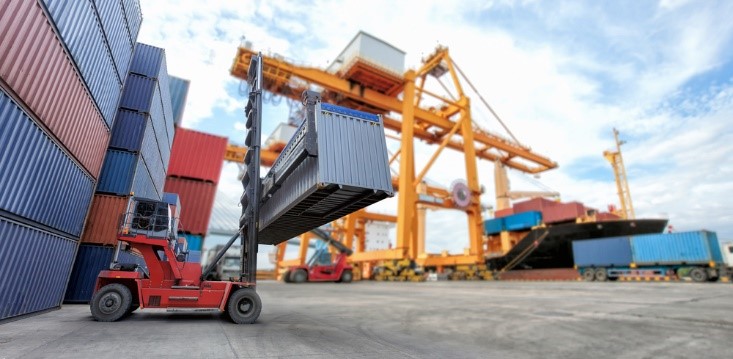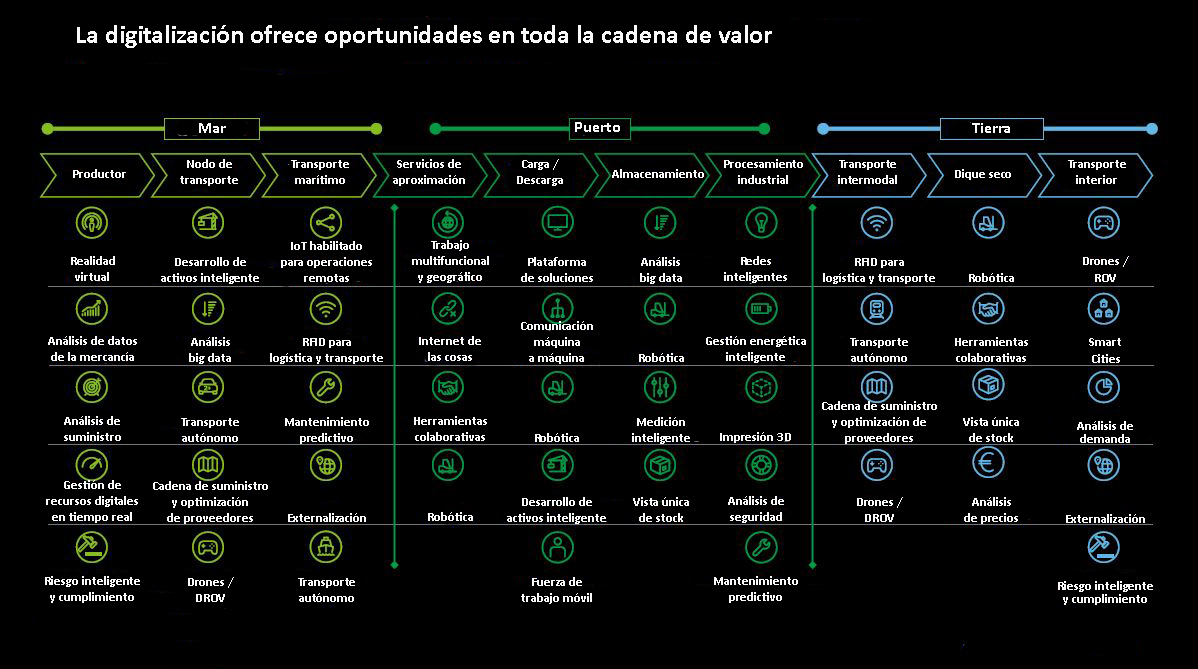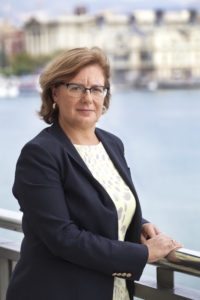admin | 29/01/2020
90% of world trade occurs on the ocean at some point in the distribution process. This datum, corroborated by the International Maritime Organization (IMO), underscores the importance of nautical and port security in which, especially in recent times, new technology is having a notable impact both with regard to prevention and reaction to potential incidents involving installations, merchandise, or personnel.
Maritime trade is prospering thanks to the reactivation of the global economy. According to the latest Review of Maritime Transport by the United Nations Conference on Trade and Development (UNCTAD), in 2017—the last fiscal year with definitive data—the growth rate was 4%, the highest in five years, and as long as economic trends remain favorable, the body forecasts a compound annual growth rate of 3.8% between 2018 and 2023.
Global port activity and cargo handling operations also increased in 2017. The world’s 20 principal ports are estimated to have handled 9.3 billion tons, compared to 8.9 billion in 2016, which is essentially equal to global maritime trade.
Increased trade and positive outlooks require vessel operators, forwarding agents, and port authorities to be constantly proactive vis-à-vis some of the sector’s critical aspects: safety and security, both at sea and in ports. The latter are difficult facilities to manage, as there are many parties involved and a number of industrial and logistical activities. They have huge operational, transport, and storage infrastructure and process all kinds of merchandise, including hazardous materials. They also have to deal with the issue of the impact of weather factors on their operations, the requirement to have all devices and systems interconnected, and the need to protect themselves from illegal trafficking of merchandise and humans that can arise given the ease of movement on the ocean.
Major risks
In this regard, cybercrime is one of the top risks facing maritime and port management, with threats including interference with automatic identification, information, and electronic chart viewing mechanisms, disturbance of GPS networks, and manipulation of loading systems and other maritime and port systems with the introduction of malware.
As acknowledged by Catalina Grimalt and Bernat Baró, assistant general manager of Organization and Internal Resources and manager of Security for the Port Authority of Barcelona, respectively, cybercrime is a quantitatively large problem, since port authorities around the world experience daily attacks and intrusions on their networks. “This requires us to implement increasingly robust security systems and raise awareness, by training users, of the necessary preventive measures that should be considered to minimize our vulnerability,” they asserted.
Industrial safety, including accidents during sea and port operations, are also risks to be considered, as they can lead to significant losses, similar to criminal acts and acts of terrorism. Experts reassure that they are uncommon, but they require constant risk assessment and having mitigation plans to be in place.
In response to these types of threats, Grimalt and Baró recognized that, “striking a balance between security measures and the operational and commercial maintenance of a port is essential,” as these events can cause notable damage to assets and infrastructure as well as partial or total shutdowns of some port activities.

Ports are facilities that are difficult to manage, as there are many parties involved and a number of industrial and logistical activities as well as large-scale transport and storage infrastructure.
Preventive and reactive measures
Therefore, potential claimable events and criminal acts must be predicted and human resources and technological tools must be combined to develop effective security and safety plans. In order for there to be comprehensive security and safety in the area, there must be detection systems, probes, and firewalls for cyberattacks; weather-forecasting technology capable of forecasting winds and tides to mitigate maritime operation accidents; and digital mechanisms that prevent unauthorized access with a decisive role in remote facility management.
In addition to preventive technology, there are reactive technologies that are activated when operators or systems technicians detect an incident has occurred. GIS is one of these specific solutions. This is a geographic information system comprising a set of tools that integrate and connect a number of components that allow for organization, storage, manipulation, analysis, and modeling of large quantities of data from the environment, ranging from site maps to information on the resources in the area or wind conditions that may affect execution.
“From the technological perspective, these tools facilitate the discovery of alarms and incidents and they can also be integrated into port platforms so that each tool does not require specific knowledge,” stated Grimalt and Baró. This means specialists performing specific port tasks can operate these tools effectively, without technological expertise.

Source: Ports of the Future, A Vision by Deloitte Port Services.
New tools
Big data is becoming considerably important in port and maritime security, given the vast amount of data handled. This technology allows for exhaustive data analysis, determining the causes of failures, problems, and defects almost in real time, recalculating risks quickly, and detecting criminal behavior and latent threats before they happen.
In addition to the undeniable operational advantages from using the Internet of Things determining the best route and instantly calculating ship arrival times, improving connectivity between vessels and land, etc. This set of techniques is also used to create assistance systems for navigation in difficult conditions, including bad weather and crowded waterways.
For maritime operations, technological processes are also used to ensure the security of vessels and their merchandise, such as the integration of radar signals, AIS (automatic identification system, with data regarding the ship on which it is installed), and weather sensors. Many applications are already using blockchain not only to monitor the shipment and provide visibility to all the links in the supply chain, but also to record information about the ships, especially on risks and overall risk exposure.
Vessel operators have also started to incorporate new security methods into existing systems and programs to prevent cyberattacks with very little human intervention via real time alerts and malware-blocking devices, in order to prevent unauthorized access to critical systems and data.
For Grimalt and Baró, one of the significant operational challenges posed by these technological solutions is maintaining them, even more so considering the fact that security systems and sensors may go unused for a long time and are only necessary in the event of an incident. “It is essential that technological components have automated monitoring and maintenance wherever possible, allowing them to be in good condition when the emergency occurs,” they affirmed.
The International Maritime Organization’s strategic plan recognizes the need to incorporate new and emerging technologies into the maritime transport regulatory framework.
Global projects
In this regard, the Port Authority of Barcelona experts indicated that in the last few years a significant financial investment has been made to modernize security and safety for both ships and ports, especially following publication of the 2018-2023 strategic plan of the IMO, the body governing maritime and port security. Adopted in December 2017, this plan recognizes the need to incorporate new and emerging technologies into the maritime transport regulatory framework.
The experts also stated that there are specific fields where international cooperation is progressing notably, thanks to joint ventures on projects carried out by different players with shared objectives, shared interests between ports, and the initiatives of national and EU institutions:
– Cybersecurity. There are several international initiatives to foster the exchange of information between ports to be more proactive against attacks, e.g., the European Picasso initiative.
– Boarding control for vehicles on ferries. In this “difficult to control environment,” there are several projects that aim to improve control in these operations, such as the implantation of sniffer chips in dogs’ olfactory recesses.
– Crime. The EU’s Cosmic project, which includes detection systems for explosives and other components using distortion of cosmic rays with muon particles.
Grimalt and Baró stressed, however, that this cooperation is fundamental, since “the technology is very expensive until it can benefit from an economy of scale. It is therefore very expensive in the initial stages. Finding someone to develop experimental technology is not easy because it is always a risk.”
Regulatory development
In any case, the Port Authority of Barcelona supervisors predict that the future will require anticipating those threats, since “the implementation of security measures is usually linked to legal obligations that, in turn, respond to crisis scenarios that arise after security incidents and accidents have occurred.” That is why they call for the development of regulations through which they can implement new security measures with the corresponding proactive application of technology. “Successfully implementing these measures without affecting operations in a way that would make trade more difficult is undoubtedly one of the major challenges of the future,” they said.
Clear regulatory frameworks will be essential to the implementation of some of these innovations, as there are cases such as explosive detection systems that, although not invasive like x-rays, require specific regulation to be used.
The outlook for all of this is positive. The UNCTAD recognizes that, in order to facilitate the technological transition, governments and the maritime sector have been adopting measures in recent years to improve safety and security culture and risk management as well as guarantee compliance with a complex and evolving legal framework.
This article was written with the participation of…

Catalina Grimalt, who holds a bachelor’s degree in Computer Science and a master’s degree in Logistics from the Polytechnic University of Catalonia, began her career as a consultant at KPMG and subsequently worked at EY.
In 1999 she docked at the Port Authority of Barcelona, where she has worked as a technical director, Computer Science supervisor, Computer Development and Service Quality supervisor, director of Information Systems and assistant general manager of Organization and Internal Resources, which is her current position.

Bernat Baró holds a bachelor’s degree in Psychology and Criminology from the University of Barcelona.
He was part of the Mossos d’Esquadra police force for 26 years, during which time he was appointed commissioner, the organization’s highest rank. Although he did not practice as such as he was hired by the Port Authority of Barcelona as manager of Security in 2010, the position he has held ever since.





